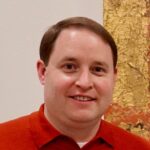A Scientific Formula for Missions
- “It is the duty of every child of God to seek constantly to win the lost to Christ by verbal witness undergirded by a Christian lifestyle, and by other methods in harmony with the Gospel of Christ” [Section XI., Baptist Faith & Message 2000].
As one who travels in ecumenical spaces within the Body of Christ, I value the way Baptists prioritize the Christian duty to make disciples of all nations and to win souls for Christ. Evangelism is, to state the obvious, a big part of what makes Baptists good evangelicals.
Baptists are also known for their deep-seated convictions around scripture. They don’t call the region most densely populated by Baptists the Bible Belt for nothing. What they are not known for – which is true of most American churches – is in attending to the ways God is revealed in that second divinely infused manuscript, creation. If anything, some Christians tend to antagonize the scientists tasked with reading the Book of Nature.
That leads us to the sorts of things I hear all too often from Christ-followers in science: “I have encountered more hostility as a scientist in a world of Christians than I have as a Christian in a world of scientists.”
Or, “How was I treated in the church as a scientist? Man, that’s a trigger question for me. The simple answer is, not very well. Sadly, our long history of often experiencing rejection or simply being ignored is disillusioning for me.”
Or, “What do I do if my church is not accepting of me as a science professional?”
I could keep going – the stories of rejection, frustration, and hurt are abundant.
If this is the experience of scientists who are committed Christ-followers, active members in Christian congregations, imagine how all the science professionals outside the church feel about Christianity.
Science for the Church exists to change this dynamic so that the way we approach science is no longer a source of pain to our members — and no longer a hindrance to the Great Commission.




No comments have been added.